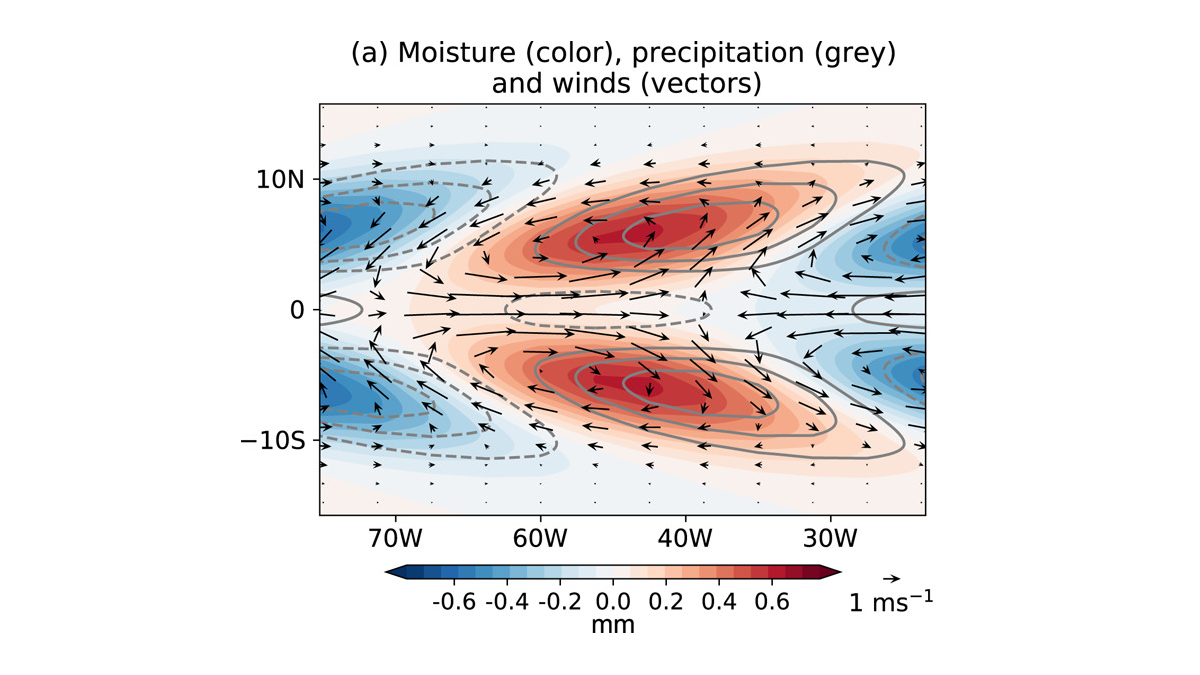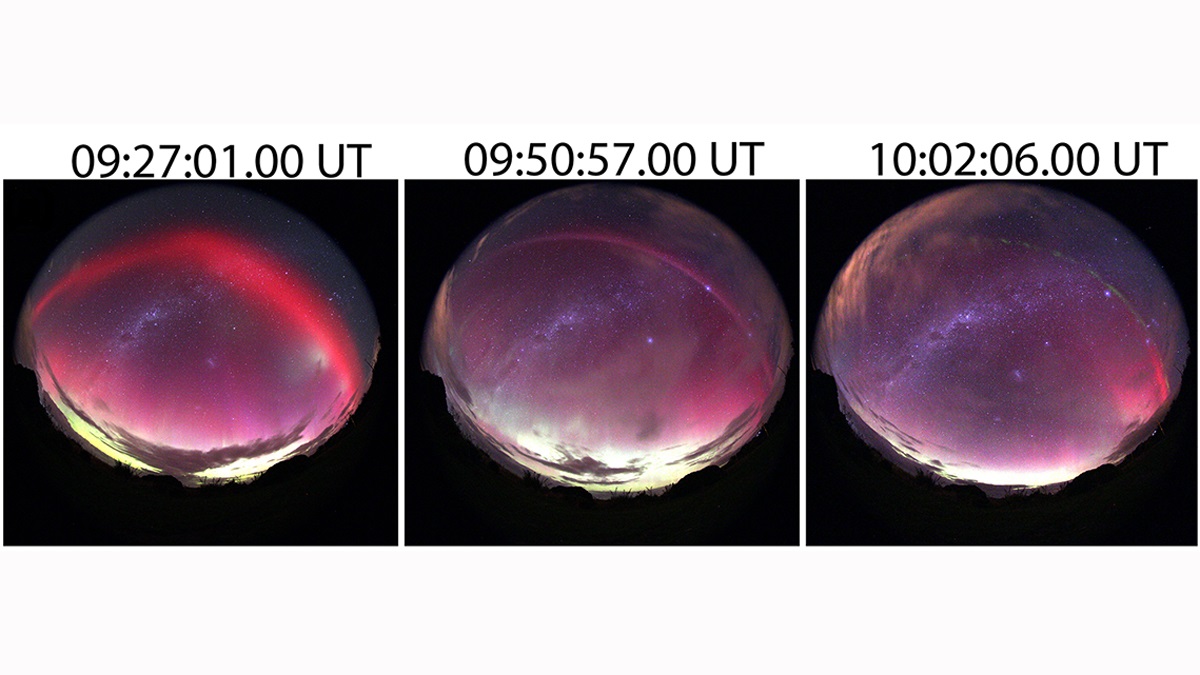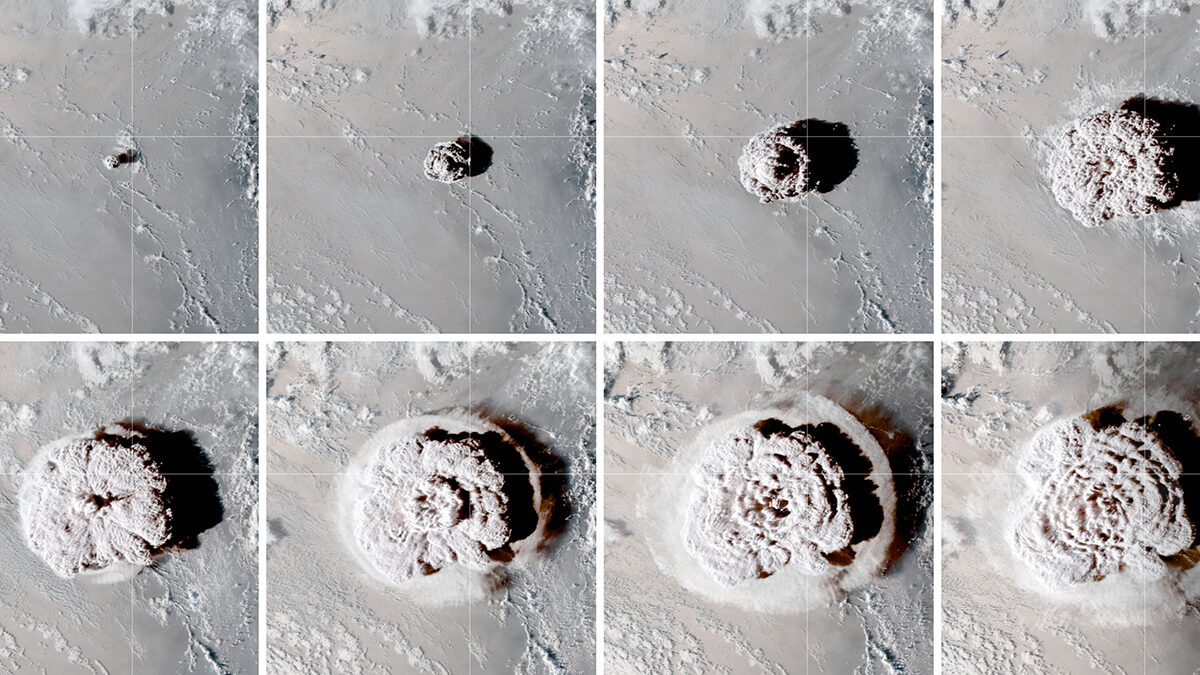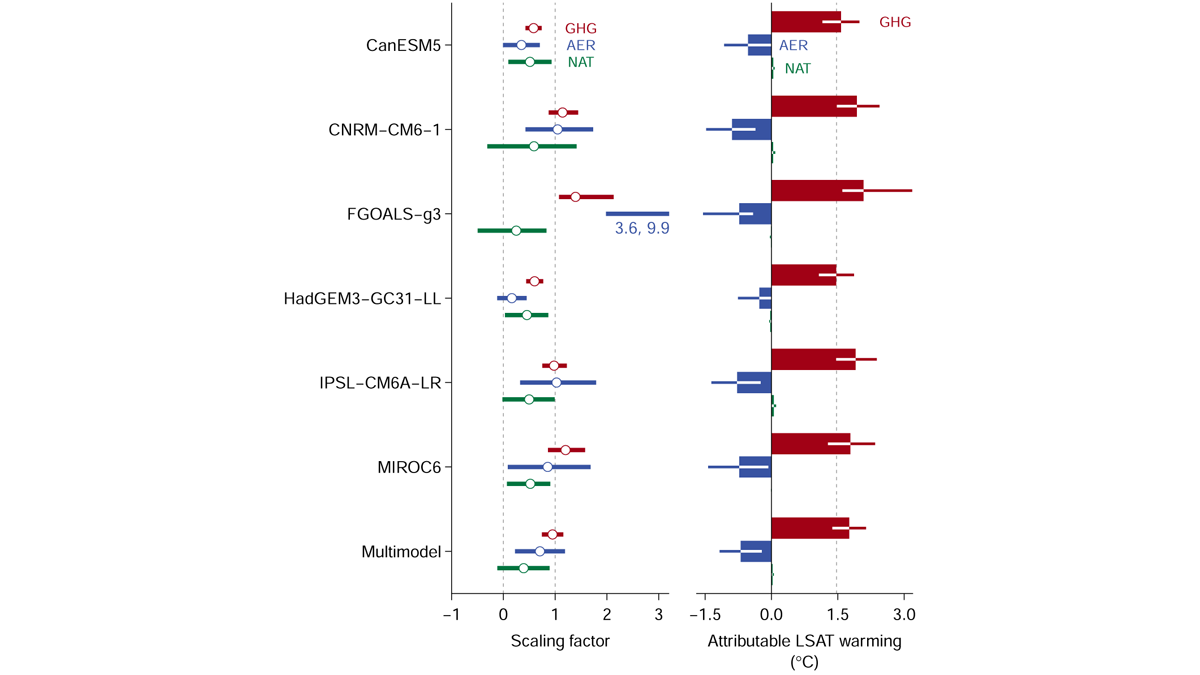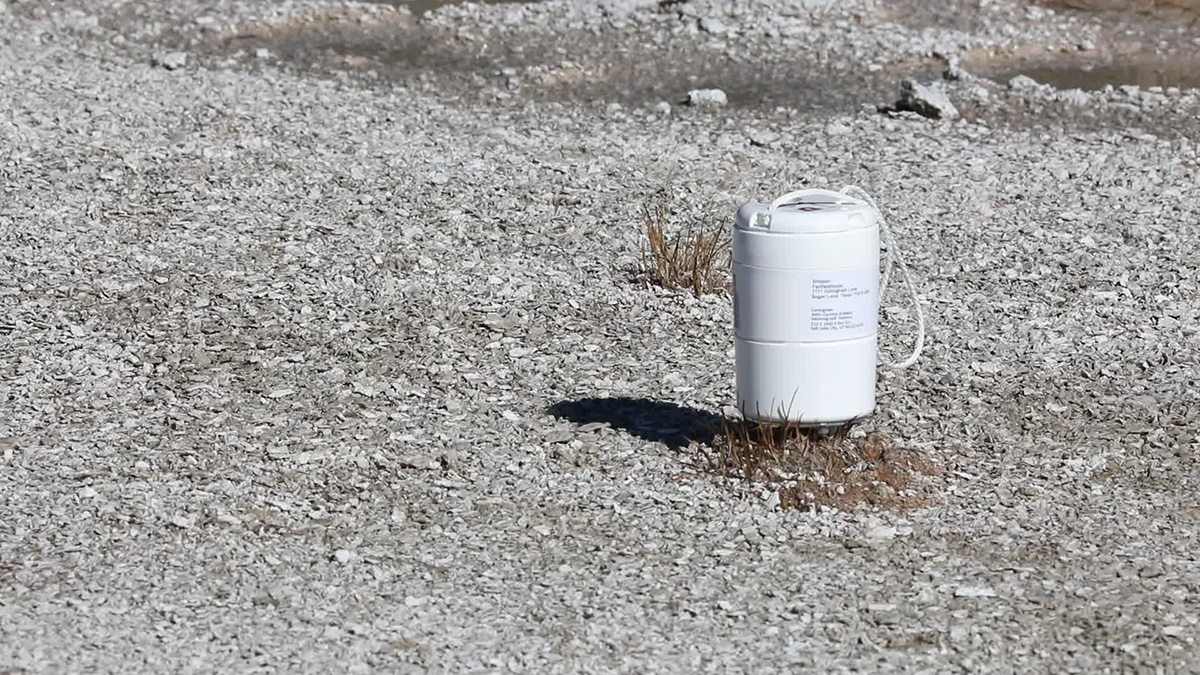Using a physical experiment, researchers show how off-fault deformation occurs along strike-slip faults with different types of motion.
Geophysical Research Letters
New Western Hemisphere Moisture Mode
A new study presents the first evidence of the existence of an intraseasonal westward-propagating moisture mode over the Western Hemisphere.
Uncovering the Mysterious STEVE Aurora
Scientists present the first direct observations on the rapid evolution of a bright red auroral arc into a thin white-mauve arc known as STEVE.
Amateur Radio Observations Help Monitor Space Weather
Amateur radio observations provide a new method for studying large-scale ionospheric disturbances and HF communication impacts, and are important applications in ionospheric space weather monitoring.
Modeling Atmospheric Waves from Hunga Tonga–Hunga Ha‘apai
A shallow-water oceanic model showed agreement with satellite observations of atmospheric waves produced by the eruption of the underwater volcano.
Tonga Eruption Made Waves in Earth’s Ionosphere
The blast from Hunga Tonga–Hunga Ha’apai produced far-reaching ionospheric disturbances, including one with an initial speed up to 950 meters per second.
Lightning Had Difficulty Forming in Early Earth’s Atmosphere
Lightning could have sparked the beginnings of life, but the primordial atmosphere might have made it more difficult for lightning to initiate.
Framework for Fingerprinting Human Influence on Climate
An optimal approach for detection and attribution studies using the CMIP6 Detection and Attribution Model Intercomparison Project (DAMIP).
Potential of Leaking Modes to Reveal Underground Structure
Instead of waiting for earthquake waves to tell scientists about the structure of Earth’s interior, scientists can now use ambient noise from humans to “see” underground.


